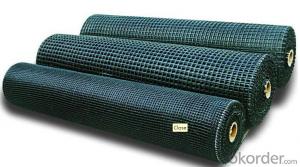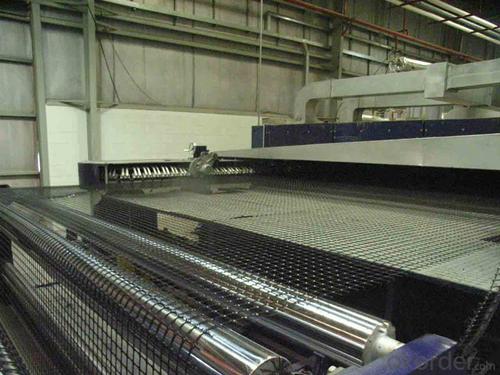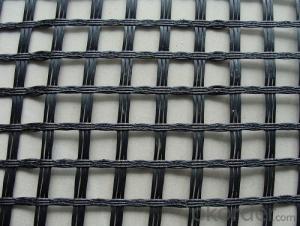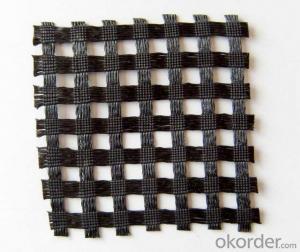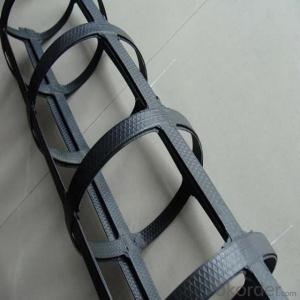Miragrid Gx Geogrids - Fiberglass Geogrid Manufacturer with Steel Plastic
- Loading Port:
- Qingdao
- Payment Terms:
- TT OR LC
- Min Order Qty:
- 50000 m²
- Supply Capability:
- 2000000 m²/month
OKorder Service Pledge
OKorder Financial Service
You Might Also Like
Fiberglass Geogrid Manufacturer with Steel Plastic
Description Of Fiberglass Geogrid Manufacturer with Steel Plastic:
Fiberglass geogrid is a kind of new favorable earthwork base material to strengthen the road surface and roadbed.This product is made by weaving and covering fiberglass filament. It is featured by high vertical and horizontal tensile strength, low unit extension, high flexibility, and favorable high and low temperature resistance.The products after surface covering own the favorable property of alkali resistance and aging resistance. It is used widely to increase the asphalt road surface, concrete road and roadbed (both soft and hard road surfaces). Compared with the traditional road surface, it reduces the cost, prolong the service life, and avoid the reflection road crackle. This product is also used to strengthen the soft land, such as railway, airport, irrigation work, and dyke, etc, and the roadbed.
Main Features of Fiberglass Geogrid Manufacturer with Steel Plastic:
1.High tensile strength, low elongation.
2.No long-term creep: the product can keep for a long time performance.
3.Thermal stability: fiber glass melting temperature above 1000 ℃.
4.The compatibility with asphalt.
5.Physical and chemical stability.
Specifications of Fiberglass Geogrid Manufacturer with Steel Plastic:
Tensile Strength (KN) | Warp | >30 | >50 | >60 | >80 | >100 | >120 | >150 | >200 |
Weft | >30 | >50 | >60 | >80 | >100 | >120 | >150 | >120 | |
Elongation(%) | <4< p=""> | <4< p=""> | <4< p=""> | <4< p=""> | <4< p=""> | <4< p=""> | <4< p=""> | <4< p=""> | |
Mesh Size(mm) | 25.4*25.4 | 25.4*25.4 | 25.4*25.4 | 25.4*25.4 | 25.4*25.4 | 25.4*25.4 | 25.4*25.4 | 25.4*25.4 | |
Elastic Modulus | 76 | 76 | 76 | 76 | 76 | 76 | 76 | 76 | |
Width(m) | 1~6 | 1~6 | 1~6 | 1~6 | 1~6 | 1~6 | 1~6 | 1~6 | |
Length(m) | 50~300 | 50~300 | 50~300 | 50~300 | 50~300 | 50~300 | 50~300 | 50~300 | |
Temperature Resistant(℃) | -100~280 | -100~280 | -100~280 | -100~280 | -100~280 | -100~280 | -100~280 | -100~280 | |
Resin Content (%) | 18~20 | 18~20 | 18~20 | 18~20 | 18~20 | 18~20 | 18~20 | 18~20 | |
Glue Type | Bitumen PVC SBR soakage | Bitumen PVC SBR soakage | Bitumen PVC SBR soakage | Bitumen PVC SBR soakage | Bitumen PVC SBR soakage | Bitumen PVC SBR soakage | Bitumen PVC SBR soakage | Bitumen PVC SBR soakage | |
Applications of Fiberglass Geogrid Manufacturer with Steel Plastic:
Strengthen bitumen concrete roadway and reduce and prevent various kinds of reflection gaps on roadway.
1. Maintenance of old asphalt road reinforcement of asphalt pavement.
2. Converting old cement concrete road into composite road.
3. Restraining reflection cracking caused by block shrinkage.
4. Preventing and controlling the cracking caused by new and old combination and uneven settlement.
5. Road extension.
6. Reinforcement of soft soil foundation and overall strength of roadbed.


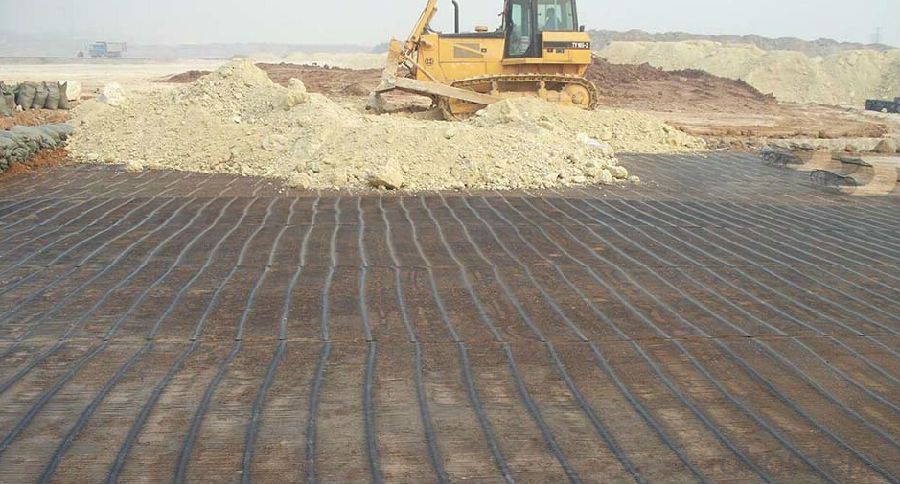
IMages of Fiberglass Geogrid Manufacturer with Steel Plastic:
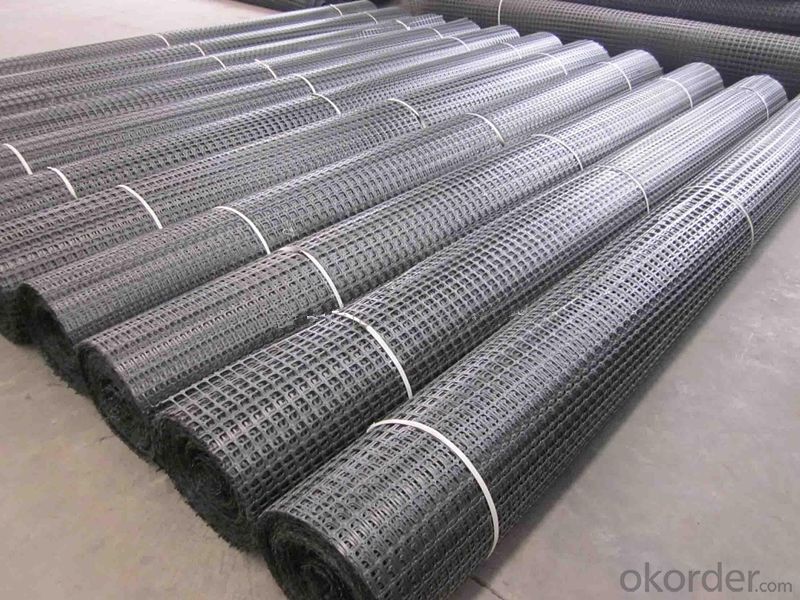




FAQ of Fiberglass Geogrid Manufacturer with Steel Plastic:
1. What are we supplying?
We are specialized in producing Geosynthetic materials, like Geogrid Series, HDPE Geocell, Geonet, Geotextile, Geomat, Tri Denmensional Composite Grainage Geonet, and Geomembrane Series.
.
2. How Many years experience do we have?
We have been exported to more than 20 countries in the past 15 years.
3. How long do we usually reply your request?
We always reply our customer within 24 hours.
- Q: Can geogrids be used in shoreline protection applications?
- Yes, geogrids can be used in shoreline protection applications. Geogrids are commonly used in erosion control projects, including shoreline protection, to reinforce soil and prevent erosion. They can help stabilize the shoreline, reduce wave impact, and provide long-term protection against erosion.
- Q: The cheapest two-way plastic geogrid manufacturers, two-way plastic geogrid prices?
- The unidirectional stretching grid is only drawn along the length direction of the plate, and the bidirectional stretching grid is made by stretching the unidirectional stretching grid in the direction perpendicular to the length.
- Q: Is it possible to add fiberglass grille between asphalt pavement and asphalt pavement
- First look at the drawing design requirements
- Q: Can geogrids be used in slope protection systems?
- Yes, geogrids can be used in slope protection systems. Geogrids are commonly used to reinforce slopes by providing stability and preventing soil erosion. They can be installed horizontally or vertically to improve the strength of the soil and enhance the overall performance of slope protection systems.
- Q: How do geogrids improve the performance of mechanically stabilized walls?
- Geogrids improve the performance of mechanically stabilized walls by providing additional tensile strength and reinforcing the soil. They help distribute lateral forces more evenly, increase stability, and reduce the risk of soil erosion. Additionally, geogrids can enhance the overall durability and longevity of mechanically stabilized walls by effectively resisting deformation and settlement.
- Q: Can geogrids be used in agricultural applications?
- Yes, geogrids can be used in agricultural applications. They are commonly used for soil stabilization, erosion control, and reinforcement of slopes in agricultural fields. Geogrids help to improve soil structure, prevent erosion, and provide support for heavy machinery, making them beneficial for various agricultural activities.
- Q: How do geogrids improve the performance of flexible retaining walls?
- Geogrids improve the performance of flexible retaining walls by providing reinforcement and stability to the soil behind the wall. They help distribute the lateral pressure from the retained soil, reducing the risk of wall failure. Additionally, geogrids increase the overall strength of the wall, allowing it to withstand greater loads and forces.
- Q: How do geogrids improve the performance of geosynthetic clay liners?
- Geogrids improve the performance of geosynthetic clay liners by enhancing their tensile strength and reducing lateral movement or deformation. The geogrids act as a reinforcement layer, providing additional stability and support to the clay liner. This helps to prevent cracking, shifting, and erosion of the liner, ultimately enhancing its overall performance and durability.
- Q: How do geogrids help in reducing construction equipment requirements?
- Geogrids help in reducing construction equipment requirements by providing soil stabilization and reinforcement. They act as a support structure, distributing loads and reducing the need for heavy machinery. This allows for cost-effective and efficient construction, minimizing the requirement for extensive equipment usage.
- Q: Geotextiles and geogrids to do the re inspection approach?
- In theory it is necessary
Send your message to us
Miragrid Gx Geogrids - Fiberglass Geogrid Manufacturer with Steel Plastic
- Loading Port:
- Qingdao
- Payment Terms:
- TT OR LC
- Min Order Qty:
- 50000 m²
- Supply Capability:
- 2000000 m²/month
OKorder Service Pledge
OKorder Financial Service
Similar products
Hot products
Hot Searches
Related keywords




